

In 2012, With the “Rio +20” Conference on Sustainable Development, where Governments decided to develop global Sustainable Development Goals.
SDG's are the continuation of the “Millennium Development Goals” that are due in 2015.
The 70th session of the UN General Assembly adopted 17 goals and 169 targets of SDG's. SDG's have officially launched since 1st of January 2016.
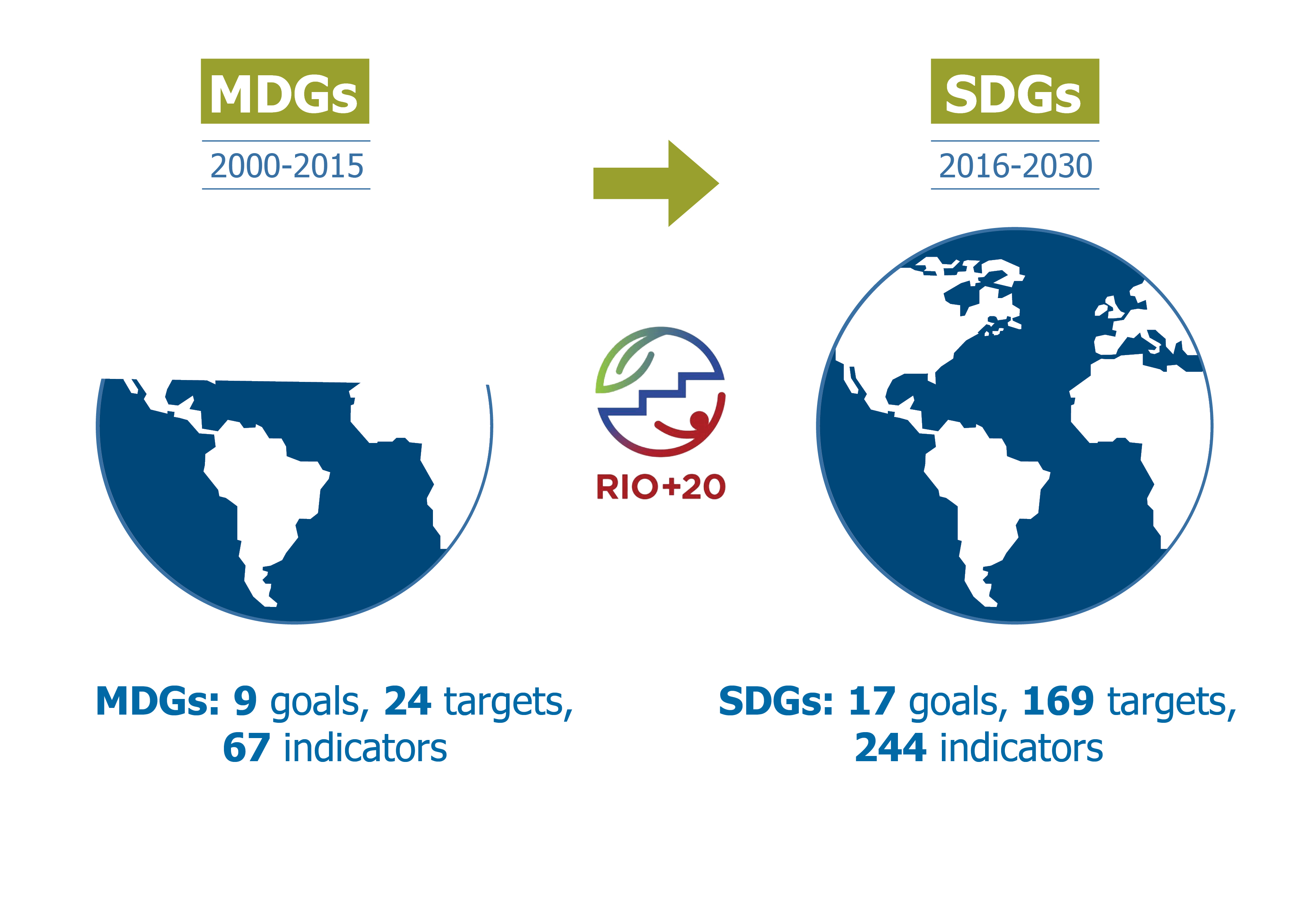
There are three pillars to achieve integrated, balanced sustainable development: economic, social and environmental.

SOCIAL

ECONOMIC

ENVIRONMENTAL
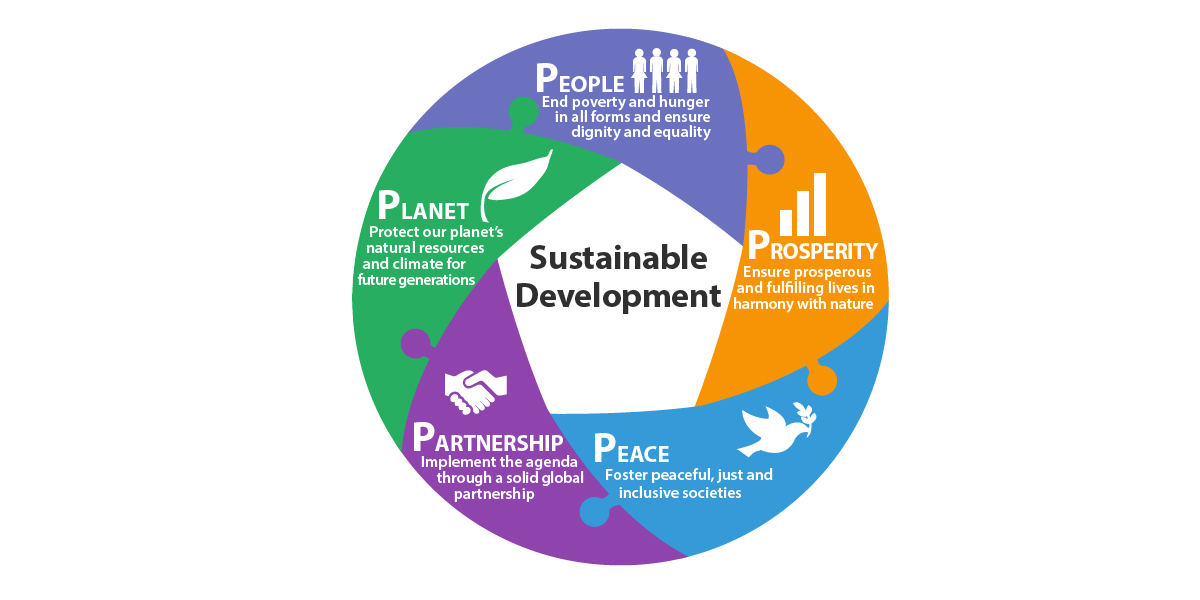
SDG’s indicator framework was developed by the Inter-Agency and Expert Group on SDG Indicators (IAEG-SDGs) and agreed upon, including refinements on several indicators, at the 48th session of the United Nations Statistical Commission held in March 2017.
|
Goal |
Name of Goal |
Target |
Indicators |
|
1 |
No Poverty |
7 |
14 |
|
2 |
No hunger |
8 |
13 |
|
3 |
Good health |
13 |
27 |
|
4 |
Quality education |
10 |
11 |
|
5 |
Gender equality |
9 |
14 |
|
6 |
Clean water and sanitation |
8 |
11 |
|
7 |
Clean energy |
5 |
6 |
|
8 |
Good jobs and economic growth |
12 |
17 |
|
9 |
Innovation and infrastructure |
8 |
12 |
|
10 |
Reduced inequalities |
10 |
11 |
|
11 |
Sustainable cities and communities |
10 |
15 |
|
12 |
Responsible consumption |
11 |
13 |
|
13 |
Protect the planet |
5 |
8 |
|
14 |
Life below water |
10 |
10 |
|
15 |
Life on land |
12 |
14 |
|
16 |
Peace and justice |
12 |
23 |
|
17 |
Partnerships for the goals |
19 |
25 |
|
Total |
169 |
244 |
|
Governments of the countries, ministries, other government organizations, universities, research institutes, civil society organizations, international organizations, business organizations, citizens and other such as professional associations are involved in the implementation of SDG's.
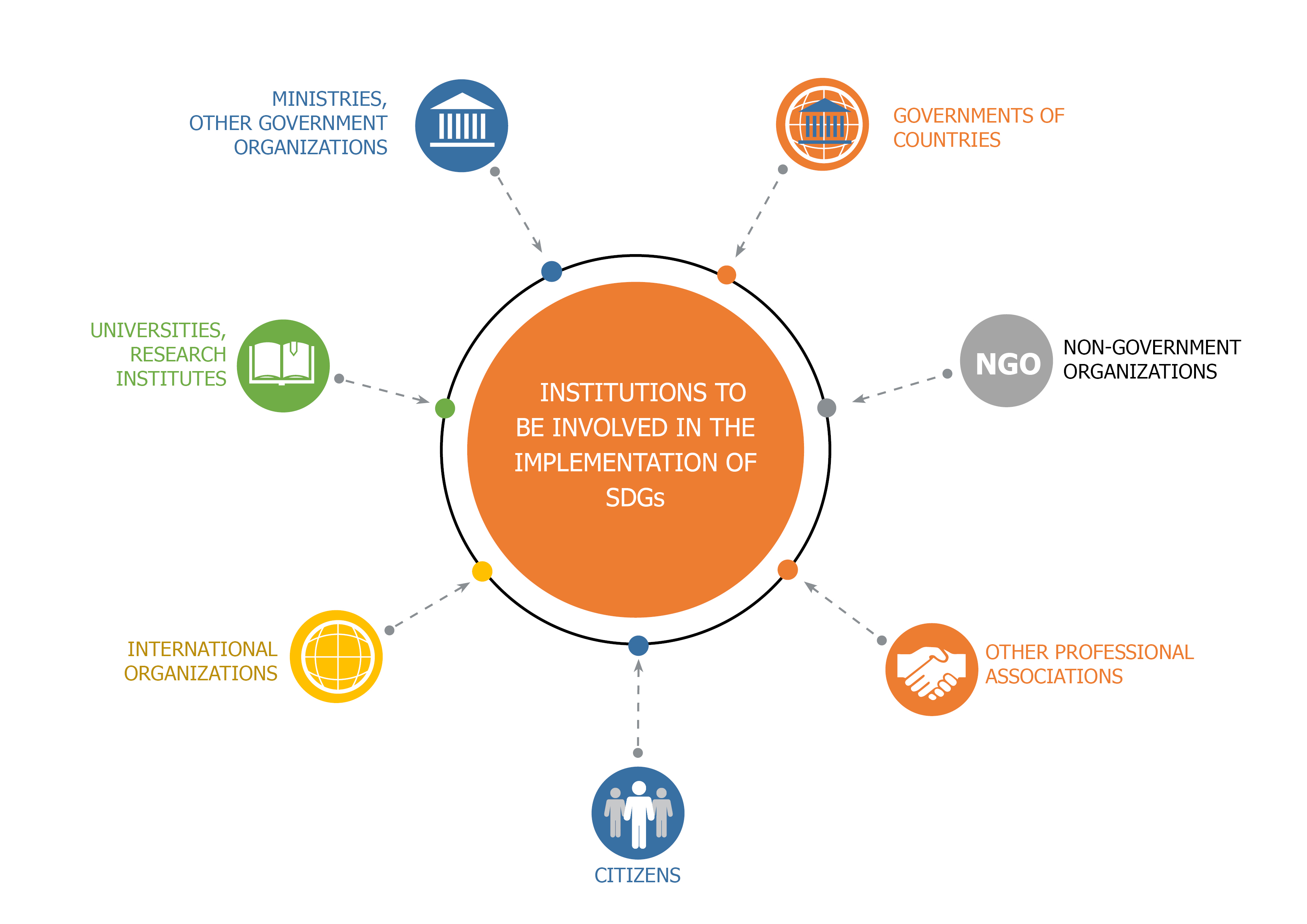
Official statistics of national statistics office, administrative statistics of ministries and other government organizations and non-conventional data (big data) are data sources of SDG's.
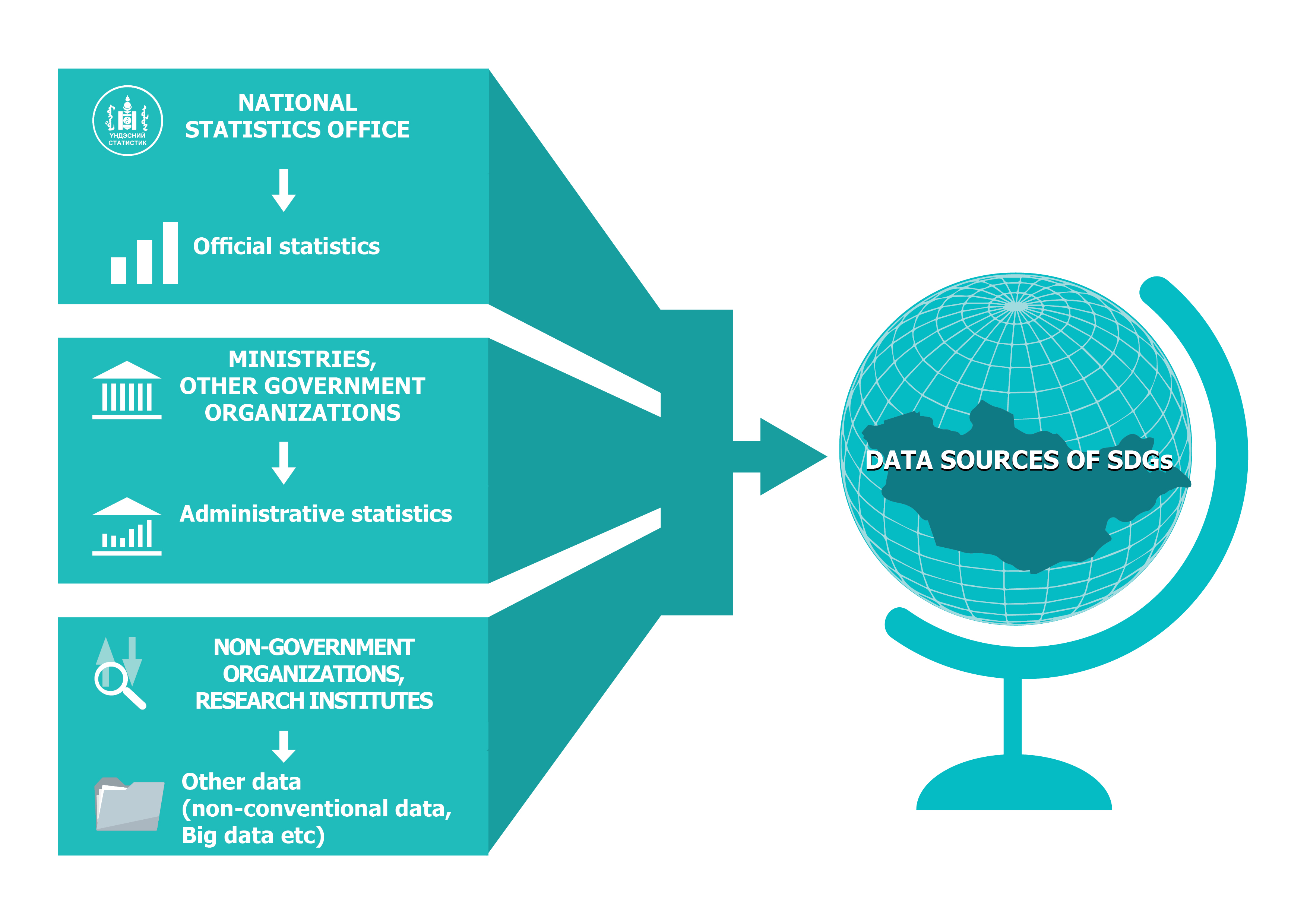
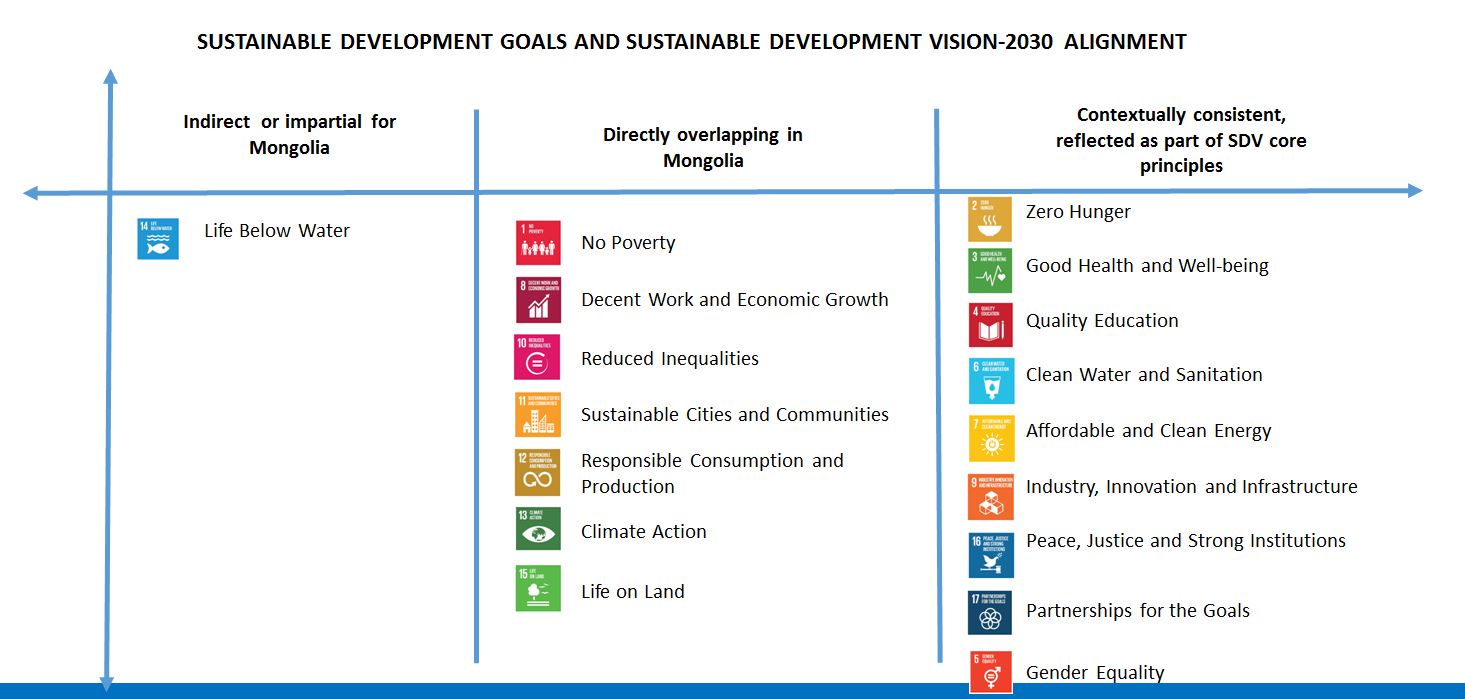
| Indicators | % | |
| 1.Total SDG | 224 | |
| 2. Not applicable to MGL | 13 | |
| 3. Total SDG assessed, (1-2) | 211 | |
| 3.1 Number of indicators split from SDG | 17 | |
| 3.2 Split | 63 | |
| 4.SDG indicators applicable to Mongolia, (3-3.1+3.2) | 257 | |
| 4.1 Readily available | 45 | 17.5% |
| 4.2 Available after little effort | 64 | 24.9% |
| 4.3 Available after more effort | 28 | 10.9% |
| 4.4 From external institution | 5 | 1.9% |
| 4.5 Available if data collection changed | 72 | 28.0% |
| 4.6 Not available | 43 | 16.7% |
| Indicators | % | |
| 1. Total SDG | 241 | |
| 2.Not applicable to MGL | 13 | |
| 3. SDG indicators applicable to MGL, (1-2) | 228 | |
| 3.1 Readily available | 60 | 26.3 |
| 3.2 Available after additional calculation | 11 | 4.8 |
| 3.3 Not available | 157 | 68.9 |
| Indicators | % | |
| 1.Total SDG | 244 | |
| 2.Not applicable to MGL | 11 | |
| 3.SDG indicators applicable to MGL, (1-2) | 233 | |
| 3.1 Readily available | 113 | 48.5 |
| 3.2 Not available | 120 | 51.5 |